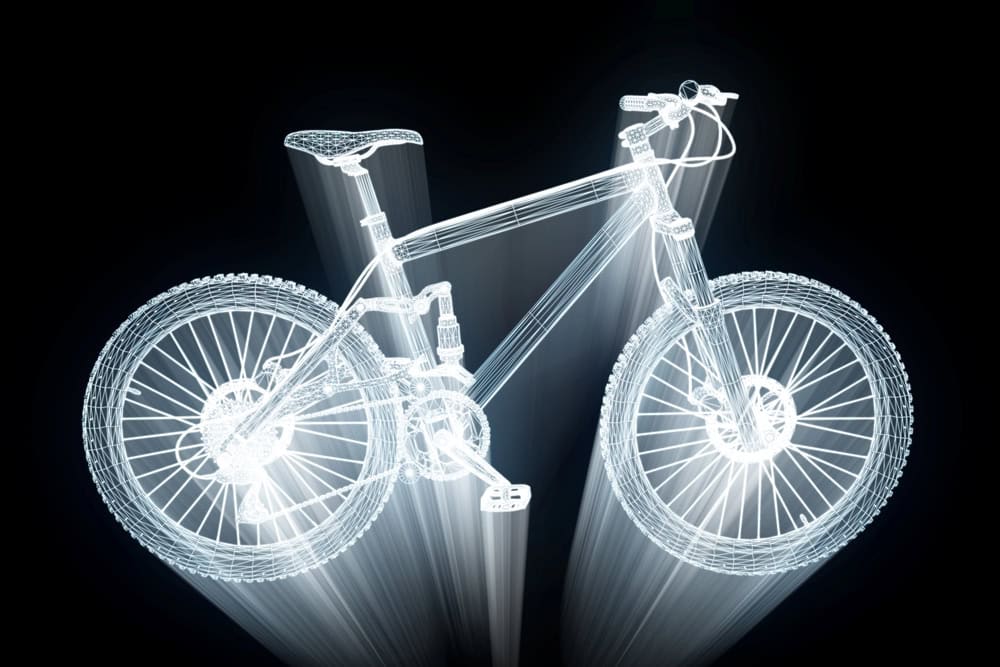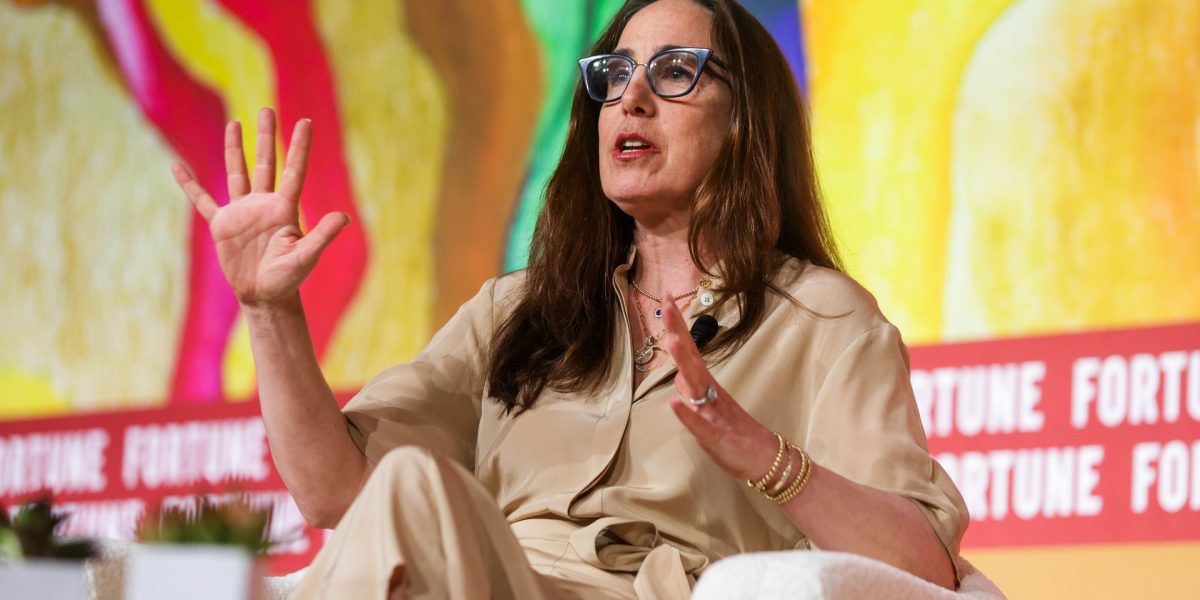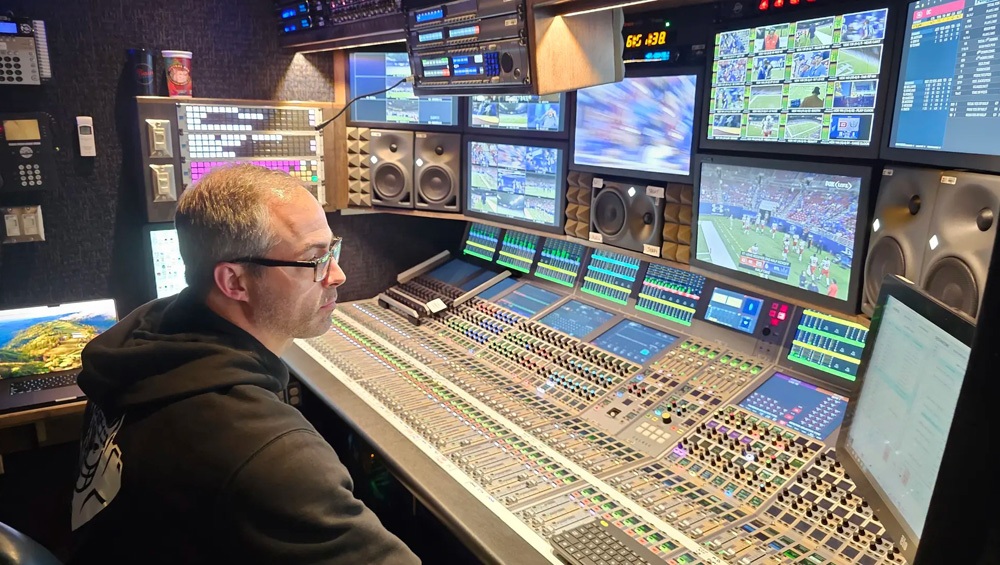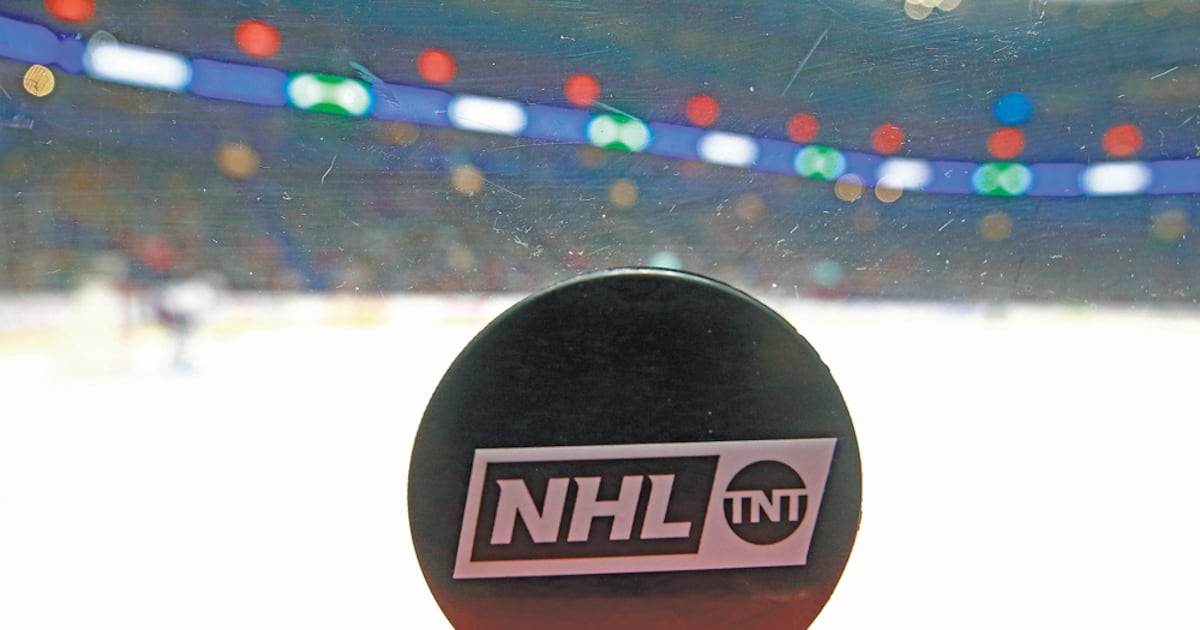Technology
Reshaping the Sporting Goods Market via Smart Technologies
As innovative technologies redefine the sporting goods industry, companies that hesitate risk falling behind more agile, digitally empowered competitors. In the sporting goods industry, innovation is the battleground where brands win or lose. Consumers demand more innovative, personalized, and sustainable products, pushing manufacturers to rethink every stage of the product lifecycle. How can this be […]



As innovative technologies redefine the sporting goods industry, companies that hesitate risk falling behind more agile, digitally empowered competitors.
In the sporting goods industry, innovation is the battleground where brands win or lose. Consumers demand more innovative, personalized, and sustainable products, pushing manufacturers to rethink every stage of the product lifecycle.
How can this be achieved? The answer lies in a digital transformation fueled by innovative technologies, including simulation, IoT, and AI-driven analytics. These forces are enhancing product design and manufacturing. And they are fundamentally reshaping how brands connect with their customers and compete in a rapidly evolving market. In this new era, those who embrace intelligence, flexibility, and sustainability will define the future of sports.
At the forefront of this transformation is the need for tools and platforms that enable manufacturers to integrate intelligence, flexibility, and sustainability into their operations. From real-time performance insights delivered by smart-enabled gear to digital twins optimizing product design, sporting goods brands leverage these technologies to remain agile, innovative, and competitive.
The Digital Shift in Sporting Goods Manufacturing
A convergence of forces is reshaping the sporting goods industry. Consumers are no longer satisfied with one-size-fits-all products—they expect equipment tailored to their unique body mechanics and goals. They want data-driven feedback to optimize their performance and demand sustainability in how gear is made and disposed of. Meanwhile, innovation is accelerating, and product cycles are getting shorter. To meet these evolving demands, manufacturers must move faster, smarter, and more collaboratively than ever before.
Digital transformation is enabling this shift. With integrated tools that connect the dots from design and prototyping to production and post-sale insights, companies are gaining the agility and intelligence needed to deliver high-quality, customized products at scale. Success depends on how well cross-functional teams—designers, engineers, data analysts, and marketers—can collaborate on unified digital platforms to create next-generation gear.
See also: How Digital Twins and Real Time Data Accelerates Time to Value
Smart-Enabled Equipment: Merging Physical and Digital
Smart-enabled sports gear is one of the most visible outcomes of this transformation. These products include connected bicycles, smart tennis racquets, wearable motion sensors, and fitness wear. Embedded IoT sensors provide real-time data about the equipment’s use.
For athletes, this means on-demand feedback that helps refine performance and prevent injury. For manufacturers, the value is equally profound: sensor data provides unprecedented visibility into product usage, revealing insights that can inform design improvements, enable predictive maintenance, and even open the door to new service-based revenue models.
Take, for example, a company producing smart cycling gear. Integrating sensors into helmets and bikes can track rider posture, acceleration, and braking patterns. This data improves rider safety and training routines and gives engineers a feedback loop, leading to better designs in future iterations. It’s a win-win that turns physical products into dynamic, data-driven ecosystems.
Simulation and Digital Twins: Revolutionizing Product Design
Designing high-performance sports gear has always involved a balance of art and science. But today, that balance is tilting firmly toward science—thanks to simulation and digital twin technology. A digital twin is a virtual model of a physical product that can simulate its performance under real-world conditions. That allows engineers to explore countless design scenarios before building a single prototype.
Using simulation and digital twins, manufacturers can now simulate stresses on a bicycle frame, the aerodynamics of a ski helmet, or the cushioning effect of a new running shoe sole—all in a digital environment. These insights help teams fine-tune products faster and more accurately while reducing the need for costly physical prototypes.
For example, imagine a manufacturer developing a new lightweight trail-running shoe. By creating a digital twin, they can simulate different sole compositions, test for durability, and model how the shoe will respond to various terrains and gait patterns. The result? A shoe that performs better and gets to market faster with fewer iterations and less waste.
AI-Driven Analytics: Turning Data into Competitive Advantage
Data is the new gold—and AI is the pickaxe. With the vast amount of performance and product usage data generated by smart gear, AI and machine learning are becoming essential tools for making sense of everything. These technologies enable predictive analytics that drive innovation across R&D, quality assurance, supply chain management, and customer engagement.
In R&D, AI can identify which design features correlate with optimal performance, guiding product innovation. In production, predictive maintenance algorithms can reduce downtime and ensure consistent quality. On the consumer side, AI-powered platforms can offer personalized recommendations—such as which type of shoe best suits an individual’s running style or when it’s time to replace their gear.
These insights also enable entirely new business models. Brands can offer subscription services for equipment upgrades, provide usage-based warranties, or launch coaching apps that integrate with smart gear. By turning raw data into actionable intelligence, companies aren’t just improving products; they’re redefining their relationship with the customer.
Staying Competitive: The Role of Integrated Digital Platforms
As digital transformation accelerates, manufacturers need more than just individual tools. They need cohesive, connected platforms that span the full product lifecycle.
There are many solutions on the market. When companies look for help, one differentiator is finding proven solutions backed by a technology partner with consumer product manufacturing expertise. Those are all areas where Siemens can help.
The Siemens Solid Edge suite empowers teams to design, simulate, and optimize products in a unified environment, enabling faster development, tighter collaboration, and smarter decision-making.
Integrated platforms break down traditional silos between departments. Designers can collaborate in real time with engineers. Marketing teams can leverage product data to refine messaging. Supply chain managers can anticipate demand spikes based on usage trends. The result is a more responsive, innovative organization built to thrive in a fast-moving, tech-driven market.
Manufacturers of consumer sporting goods use Siemens Solid Edge to gain access to a suite of tools that streamline the entire product development process. Some of the main features and benefits of using the solution include:
- Advanced 3D CAD for product design
- Integrated simulation and analysis
- Generative design and topology optimization
- Data management and collaboration
- Integration with additive manufacturing and CAM
- Rendering and visualization
- Support for IoT and Digital Twins.
Solid Edge enhances collaboration by unifying design, validation, and production planning in such a single platform and ensures a smoother transition from concept to finished product. That is particularly important in today’s marketplace, where there is a growing complexity of products. For example, Rotor Bike Components found that by leveraging Siemens NX CAD/CAM/CAE software for design and simulation, they realized a 15% faster implementation of design changes and a 15% reduction in routine tasks and time to market.
How does that help? Speed to market is critical in the consumer product space because customer preferences shift rapidly, and being first to the market can secure brand loyalty and competitive advantage. Short product life cycles mean delayed launches risk missing seasonal trends or being outpaced by competitors. Additionally, faster time-to-market allows companies to respond quickly to feedback, iterate designs, and capture revenue opportunities sooner.
Conclusion: A New Era for Sporting Goods
The race to innovate has never been more intense, and the window to lead is rapidly narrowing. As innovative technologies redefine the sporting goods industry, companies that hesitate risk falling behind more agile, digitally empowered competitors. Now is the time to rethink your product development strategies, embrace data-driven insights, and build smarter, more sustainable gear that meets the demands of today’s athletes.
Siemens is ready to help you seize this moment. With solutions like the Solid Edge portfolio, Siemens empowers sporting goods manufacturers to design faster, innovate smarter, and deliver world-class products that will shape the future of sports. The next era of excellence is here. Make sure you’re leading it.
Technology
Navigating the Modern Sports Landscape
The world of sports is a relentless, ever-shifting beast, constantly redefining itself with new challenges, technologies, and fan engagements. From the thunderous roar of the crowd at a major championship to the quiet intensity of an athlete’s personalized training regimen, the essence of competition remains, but the avenues through which it’s experienced and analyzed are […]

The world of sports is a relentless, ever-shifting beast, constantly redefining itself with new challenges, technologies, and fan engagements. From the thunderous roar of the crowd at a major championship to the quiet intensity of an athlete’s personalized training regimen, the essence of competition remains, but the avenues through which it’s experienced and analyzed are transforming at an unprecedented pace. As we hurtle through 2025, several key trends are shaping the future of athletic endeavor and the profound ways we interact with it.
One of the most impactful revolutions sweeping through sports is the integration of Artificial Intelligence (AI). AI is no longer a futuristic concept but a tangible tool actively enhancing performance and strategy. Machine learning algorithms pore over vast datasets, analyzing everything from player biomechanics to opponent tendencies. This granular insight allows coaches to craft hyper-personalized training programs, optimize game-day strategies, and even predict injury risks with remarkable accuracy. Wearable tech, powered by AI, provides real-time feedback, enabling athletes to fine-tune their movements and maximize their potential. The days of purely intuitive coaching are giving way to a data-driven approach, where every sprint, every pass, every shot is meticulously analyzed to unlock new levels of athletic prowess.
The global landscape of sports is also influencing how fans engage with the games they love. The rise of digital platforms and immersive technologies like virtual reality (VR) and augmented reality (AR) are bringing the action closer than ever before. Imagine experiencing a crucial goal from the striker’s perspective in VR, or having real-time player statistics overlaid onto your stadium view via AR. This pushes fan engagement beyond passive viewership, creating interactive and personalized experiences. Similarly, the growing legality and accessibility of sports betting are adding another layer of interaction for many enthusiasts. For those looking to deepen their engagement, exploring reputable betting sites in Canada offers a legal and regulated avenue to place wagers on their favorite teams and athletes, further intensifying the excitement and personal stake in the outcome of games. This evolving relationship between fans and the sport, driven by technology and accessibility, is creating a more dynamic and interactive landscape for everyone involved.
Beyond the field of play, the mental fortitude of athletes is finally receiving the long-overdue attention it deserves. The immense pressure to perform at an elite level, coupled with constant public scrutiny and the demanding travel schedules, can take a significant toll on mental well-being. Organizations and teams are increasingly investing in comprehensive mental health support systems, recognizing that a healthy mind is as crucial as a healthy body for sustained success. From dedicated sports psychologists to peer support programs, the stigma surrounding mental health in sports is slowly but surely eroding, paving the way for athletes to openly seek help and prioritize their psychological well-being. This holistic approach to athlete development is not just about performance; it’s about fostering resilient individuals capable of navigating the highs and lows of a high-stakes career.
Looking ahead, the evolution of sports promises to be as thrilling as the games themselves. We can anticipate even more sophisticated AI applications, pushing the boundaries of human performance and strategic innovation. Fan engagement will continue to become more immersive and personalized, blurring the lines between spectator and participant. As the world of sports continues to embrace technological advancements and prioritize athlete well-being, the future holds endless possibilities for how we play, watch, and connect with the universal language of competition. The arena is truly ever-evolving, and the game is just getting started.
Technology
Halo Sports CEO on future of tech in sports
© 2025 Fortune Media IP Limited. All Rights Reserved. Use of this site constitutes acceptance of our Terms of Use and Privacy Policy | CA Notice at Collection and Privacy Notice | Do Not Sell/Share My Personal InformationFORTUNE is a trademark of Fortune Media IP Limited, registered in the U.S. and other countries. FORTUNE may receive […]

© 2025 Fortune Media IP Limited. All Rights Reserved. Use of this site constitutes acceptance of our Terms of Use and Privacy Policy | CA Notice at Collection and Privacy Notice | Do Not Sell/Share My Personal Information
FORTUNE is a trademark of Fortune Media IP Limited, registered in the U.S. and other countries. FORTUNE may receive compensation for some links to products and services on this website. Offers may be subject to change without notice.
Technology
UFL Conference Championship Sees Fox Sports Continue AI, 5G Innovation
UFL Conference Championship Sees Fox Sports Continue AI, 5G Innovation – TV News Check Home » UFL Conference Championship Sees Fox Sports Continue AI, 5G Innovation Link 0

Technology
What WBD’s divorce means for sports media.
In a landmark day for media, Warner Bros. Discovery proclaimed it will split into separate entities, breaking up its global networks (including TNT Sports and Bleacher Report) from its streaming and studios properties. The deal, expected to close mid-2026, isn’t unexpected — but the timing is. “It seemed to have been well telegraphed that they […]

In a landmark day for media, Warner Bros. Discovery proclaimed it will split into separate entities, breaking up its global networks (including TNT Sports and Bleacher Report) from its streaming and studios properties.
The deal, expected to close mid-2026, isn’t unexpected — but the timing is.
“It seemed to have been well telegraphed that they were going to go down this path,” said Naveen Sarma, S&P Global’s managing director. “The timing of the announcement was a bit of a surprise. We thought it would happen later this year.”
The majority of WBD’s $37 billion debt will head to Global Networks, helmed by the company’s new president and CEO, Gunnar Wiedenfels (current WBD CFO). WBD CEO David Zaslav will run the streaming and studios business.
“They’re trying to manage the decline of linear television and the ability to get the streaming/studio business sustainable,” said Sarma. “If they think that next year is the right time that they’ll be cash-flow break-even on that business, maybe that’s the way they did the math, because clearly linear is declining at a much more rapid rate than we thought six months ago.”
The linear business (Global Networks) will keep the company’s sports rights, which now includes properties like the NCAA Men’s Basketball Tournament, NHL, NASCAR, Roland-Garros, MLB, Big East basketball, Unrivaled and a sublicensing agreement with ESPN for the College Football Playoff. Those properties primarily air across TNT, TBS and truTV.
“I would call cable the soon-to-be-forgotten stepchild of the different broadcast distribution menus,” said Sarma. “If you’re a sports league, you want to be on broadcast networks, because you get the broadest reach. When you think of tonnage, you really want to be on streaming. That used to be cable.”
Added Sarma: “It sounded like sports was going to go on HBO Max, but how is that going to benefit the new cable ‘SpinCo’? It isn’t, other than the fact they may get [carriage] fees. That puts them in a really tough position.”
The companies will have one advertising sales team that will work across both entities and there will also be content-sharing agreements that allow programming to be shared across both platforms.
What does the future hold?
What Zaslav announced today might look different down the road, especially when it comes to sports.
“[WBD] made a comment about how sports was going to stay with the linear TV business, but then decisions would be made down the road,” said Sarma. “I’m not sure what that meant. Does that mean that they put it on their own streaming service or they decide to walk away from it eventually?”
The WBD breakup comes after Comcast/NBCUniversal made its own moves into two separate companies, though that split may be better overall than WBD’s. “Comcast is still keeping two of the better assets,” said Sarma, pointing to NBC’s broadcast network and the Bravo library (which includes the cash-printing “Real Housewives” franchise).
Where WBD might have a bit of an “advantage” is the global portfolio and sports rights overseas, which is not experiencing the same declines in viewership or cord-cutting as in the U.S.
“In theory, it’s a better, more diversified business, which in theory should have better results because advertising overseas isn’t falling off a cliff,” said Sarma. “The metrics for the Warner linear TV business — advertising is dropping in double digits. They’re losing a billion dollars a year in EBITDA. You’d think with the diversification the numbers would be better, but they’re clearly not very good.”
For other large media companies, don’t expect to see a similar split with Disney and ESPN, though it could remain a possibility for Paramount if the Skydance Media merger closes. “CBS is probably a keeper, but the rest of the linear networks could do something similar,” said Sarma.
Technology
ZetrOZ Systems Supports the Next Generation of Physician-Scientists with Sponsorship of the Orthopaedic Foundation’s Medical Immersion Program
The inventor of sustained acoustic medicine and the sam® wearable ultrasound technologies support students at an internationally known summer program and funds student and professional research through its STEM Scholarship Program. TRUMBULL, Conn., June 10, 2025 (Newswire.com) – ZetrOZ Systems, inventor of sustained acoustic medicine and the sam® wearable ultrasound device, is supporting the next […]

The inventor of sustained acoustic medicine and the sam® wearable ultrasound technologies support students at an internationally known summer program and funds student and professional research through its STEM Scholarship Program.
TRUMBULL, Conn., June 10, 2025 (Newswire.com)
–
ZetrOZ Systems, inventor of sustained acoustic medicine and the sam® wearable ultrasound device, is supporting the next generation of medical science through its sponsorship of the Orthopaedic Foundation’s Manhattan Medical Immersion Camp, a world-class hands-on program for aspiring physicians and medical researchers.
The Orthopaedic Foundation created the camp to provide high school and college students with the opportunity to explore a broad spectrum of medical specialties and alternative fields within healthcare, including biomedical engineering and medical devices.
ZetrOZ Systems CEO George K. Lewis, PhD, a biomedical engineer, is a member of the Foundation’s board of directors and has served on the faculty of the Medical Immersion Camp. “It is an honor to be part of the Orthopaedic Foundation’s Medical Immersion Camp and to be able to show these ambitious students how technological innovations like sustained acoustic medicine evolved out of the lab and how the sam® devices are changing the way we treat soft tissue injuries,” Lewis said.
Sustained acoustic medicine is a long-duration, continuous, multi-hour, high frequency ultrasound treatment that reduces inflammation, increases blood vessel diameters, and improves blood flow. That increases oxygenated hemoglobin at the site and removes cytokine enzymes and cellular waste, with the result of more rapid healing and reduced pain.
The treatment has been extensively studied in over 30 clinical trials for treating chronic soft tissue injuries, and through millions of treatments provided annually to patients across the United States.
Dr. Stephanie Petterson, the Orthopaedic Foundation’s director of research and clinical education program director. “One of the goals of the Medical Immersion Camp is to have students examine the field of medicine from many perspectives, including regenerative and sports medicine and physical therapy,” she said. “Sustained acoustic medicine is an important, emerging treatment in those fields, helping patients recover without surgery and or the use of potentially addictive pain medication.”
The technology behind ZetrOZ Systems’ sam® wearable ultrasound devices is defined in 48 U.S. and global patents and has been cleared by the U.S. Food and Drug Administration for home use in treating soft-tissue injuries.
ZetrOZ Systems is also supporting medical students and professionals with its second $20,000 STEM Scholarship Program. To help this generation of researchers achieve their goals, ZetrOZ Systems is providing four $5,000 scholarships to students or healthcare professionals in support of their educational or research expenses.
Applicants are required to write a 1,200-word essay on the global healthcare advancements in healing soft tissue injuries, addressing new medical technologies, mechanobiology applications and emerging clinical research trends worldwide, and a 250-word letter on their plans for the scholarship funds should they be selected as a recipient.
Applicants should submit those written pieces, as well as a current transcript of undergraduate and/or graduate studies and two professional references, to info@samrecover.com by July 31, 2025. Winners will be announced in September and October.
ZetrOZ Systems’ support of healthcare students and researchers aligns with its mission of developing innovations in medical science. For more information on ZetrOZ Systems and the revolutionary sam® wearable ultrasound device, please visit https://zetroz.com/ and www.samrecover.com.
For more information on the Orthopaedic Foundation, please visit https://ofals.org/.
About ZetrOZ Systems
ZetrOZ Systems is leading healing innovations in sports medicine, developing wearable bioelectronic devices to deliver sustained acoustic medicine (sam®). Researched and funded by the federal government, ZetrOZ is built on the proprietary medical technology of 48 patents and is the exclusive manufacturer and developer of the sam® product line, designed to treat acute and chronic musculoskeletal conditions.
About the Orthopaedic Foundation
Born of the need to promote and encourage research and education in the field of orthopaedics and sports medicine, the Orthopaedic Foundation was established in 2002 with a focus on innovation to manage osteoarthritis and other musculoskeletal diseases, prevent injury to individuals across the spectrum of activity, and develop minimally invasive treatments with shorter recovery times, to keep people active and pain-free.
Source: ZetrOZ Systems
Technology
The Business Side of Tennis No One Talks About
Tennis is easy to follow on the surface—big matches, famous players, major tournaments. That’s what most people see. But a whole other side keeps the sport alive and growing: business. From sponsorships to broadcasting rights, and from betting platforms to event tech, tennis runs on much more than rallies and rankings. What happens off the […]

Tennis is easy to follow on the surface—big matches, famous players, major tournaments. That’s what most people see. But a whole other side keeps the sport alive and growing: business. From sponsorships to broadcasting rights, and from betting platforms to event tech, tennis runs on much more than rallies and rankings. What happens off the court matters as much as what happens on it. In this article, we’ll look at the business side of tennis—how it works, who’s involved, and why it matters more than people realize.
The Quiet Players Behind Modern Tennis
There’s more to tennis than what you see on the court. Behind every match are companies helping to shape how the sport is run, watched, and supported. From brand sponsors to tech providers, these players help keep tournaments going and fans connected. Some focus on streaming or live stats, while others handle event logistics or digital tools for organizers and media outlets.
One of these behind-the-scenes names is Altenar, a sportsbook software provider that works with licensed betting platforms worldwide. Betting may not always be front and centre, but it plays a steady role in keeping fans engaged and bringing in extra sports revenue. Alongside betting tech, data services and event support systems are becoming key to how tennis grows and reaches new audiences—quietly keeping the game running beyond the rallies.
Sponsorships Keep the Game Going
Sponsorship is a key part of what keeps tennis alive, both on the global stage and at the grassroots level. From branded courts to logos on shirts, sponsors are everywhere in the sport. Their support helps cover tournament costs, boost prize funds, and bring events to TV screens worldwide. Even smaller local competitions often rely on sponsorship just to take place. Here are some of the biggest names involved in tennis sponsorship:
- Rolex: Serves as the official timekeeper for Wimbledon and other major events.
- Emirates: A long-time sponsor of the ATP Tour, with branding seen at top tournaments.
- Nike and Adidas: Provide apparel and footwear to many of the sport’s biggest stars.
- Peugeot and Kia: Known for player partnerships and supporting tournament transport.
- Lacoste and Wilson: Active through player sponsorships and official equipment deals.
These brands don’t just show up for the visibility—they become part of the sport’s identity. Their funding supports players’ careers, tournament growth, and the overall fan experience, making them essential to tennis beyond the court.
How Tennis Reaches Millions Through TV and Streaming
TV and streaming deals bring in a lot of money for tennis. Big sports networks and online platforms pay to show tournaments like Wimbledon and the US Open, and that money helps fund events, players, and organizers. These deals also mean fans everywhere—from Europe to Asia to Africa—can watch matches live, regardless of where they happen. Lately, there’s a shift toward streaming without middlemen. Some tennis organizations are launching platforms and apps, so fans can watch matches directly. This helps people in countries without easy access to sports channels to still follow the action. It’s not just about showing the game—it’s about growing it, bringing tennis to new places and more people, one stream at a time.
The Tech That Keeps Tournaments Running
Tennis tournaments use many tools to stay on schedule and keep everything in place. Hawk-Eye makes line calls using video review. Fans enter with mobile tickets, and matches are planned using software that tracks court use, timing, and delays. These systems help events stay organized from the first serve to the last point.
Behind the scenes, are tools for player check-ins, equipment handling, and entry control. Vendors also manage live scoring, data feeds, and broadcasting. This setup allows events to run without major issues. While fans don’t often notice, this tech is part of nearly every match they watch or attend.
Final Thoughts: A Sport Built on More Than Talent
Tennis isn’t just about players and matches. It depends on many working in the background—sponsors who fund events, tech companies that power live scoring and betting, and platforms that bring the game to screens around the world. These parts ensure fans can watch, tournaments can run, and players can focus on competing.
In the future, this side of tennis will only grow. More events will use their streaming services, betting will continue to bring in money, and data will shape how fans follow matches in real time. Understanding this helps us see tennis more clearly—not just as a sport, but as something built on teamwork far beyond the court.


-

 Professional Sports3 weeks ago
Professional Sports3 weeks agoJon Jones answers UFC retirement speculation as fans accuse champion of 'holding the belt …
-

 Motorsports3 weeks ago
Motorsports3 weeks agoWhy IHOP Rode With Dale Earnhardt Jr. In Amazon NASCAR Debut
-

 NIL2 weeks ago
NIL2 weeks ago2025 NCAA Softball Tournament Bracket: Women’s College World Series bracket, schedule set
-

 Health5 days ago
Health5 days agoOregon track star wages legal battle against trans athlete policy after medal ceremony protest
-

 College Sports1 week ago
College Sports1 week agoIU basketball recruiting
-

 Professional Sports5 days ago
Professional Sports5 days ago'I asked Anderson privately'… UFC legend retells secret sparring session between Jon Jones …
-

 Youtube3 weeks ago
Youtube3 weeks agoAnt greets A-Rod & Barry Bonds before Game 3 ⚾
-

 Rec Sports2 weeks ago
Rec Sports2 weeks agoJ.W. Craft: Investing in Community Through Sports
-

 Rec Sports2 weeks ago
Rec Sports2 weeks agoScott Barker named to lead CCS basketball • SSentinel.com
-

 Professional Sports5 days ago
Professional Sports5 days agoUFC 316 star storms out of Media Day when asked about bitter feud with Rampage Jackson
































